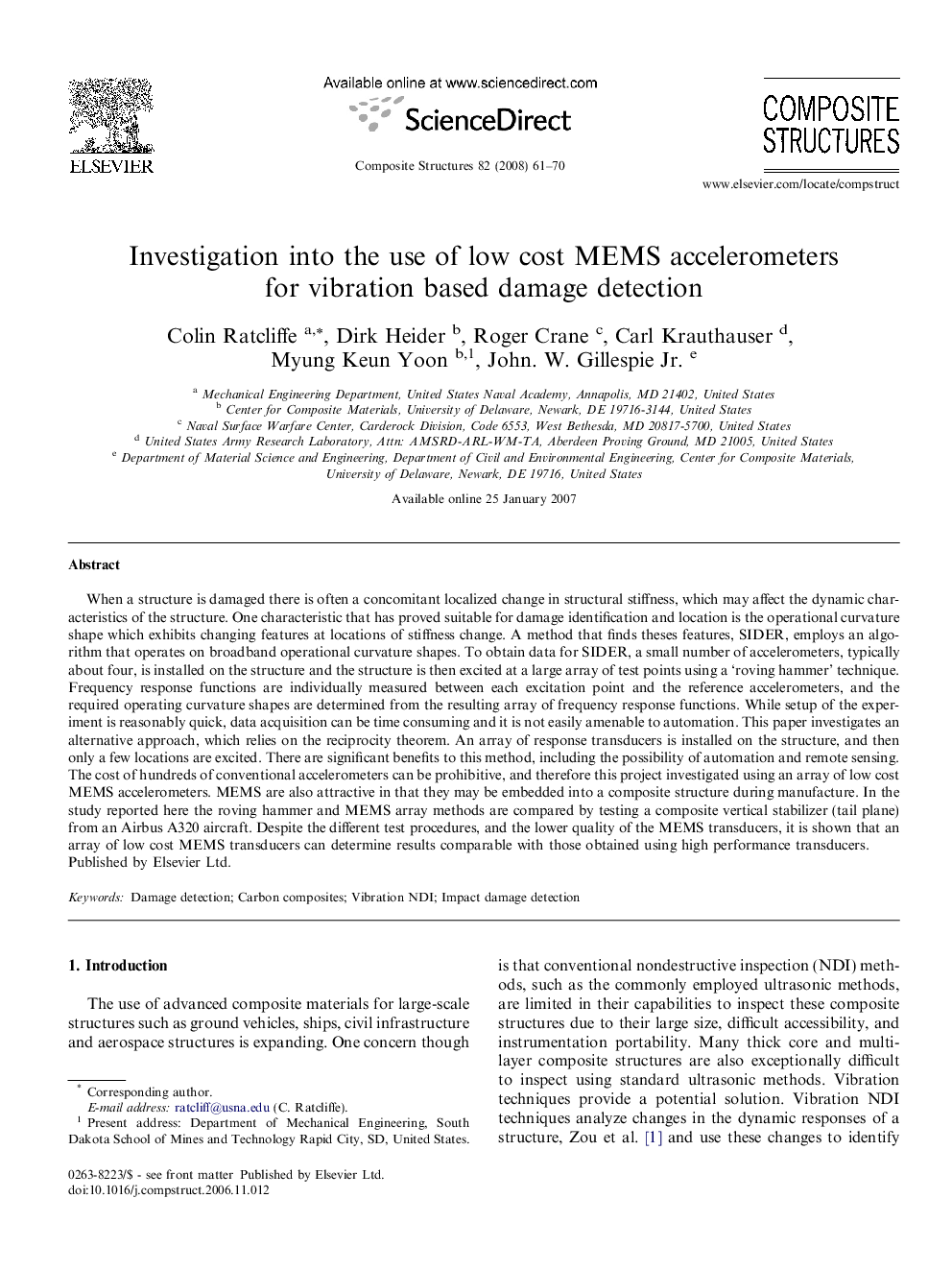| Article ID | Journal | Published Year | Pages | File Type |
|---|---|---|---|---|
| 253840 | Composite Structures | 2008 | 10 Pages |
When a structure is damaged there is often a concomitant localized change in structural stiffness, which may affect the dynamic characteristics of the structure. One characteristic that has proved suitable for damage identification and location is the operational curvature shape which exhibits changing features at locations of stiffness change. A method that finds theses features, SIDER, employs an algorithm that operates on broadband operational curvature shapes. To obtain data for SIDER, a small number of accelerometers, typically about four, is installed on the structure and the structure is then excited at a large array of test points using a ‘roving hammer’ technique. Frequency response functions are individually measured between each excitation point and the reference accelerometers, and the required operating curvature shapes are determined from the resulting array of frequency response functions. While setup of the experiment is reasonably quick, data acquisition can be time consuming and it is not easily amenable to automation. This paper investigates an alternative approach, which relies on the reciprocity theorem. An array of response transducers is installed on the structure, and then only a few locations are excited. There are significant benefits to this method, including the possibility of automation and remote sensing. The cost of hundreds of conventional accelerometers can be prohibitive, and therefore this project investigated using an array of low cost MEMS accelerometers. MEMS are also attractive in that they may be embedded into a composite structure during manufacture. In the study reported here the roving hammer and MEMS array methods are compared by testing a composite vertical stabilizer (tail plane) from an Airbus A320 aircraft. Despite the different test procedures, and the lower quality of the MEMS transducers, it is shown that an array of low cost MEMS transducers can determine results comparable with those obtained using high performance transducers.
